 | TODAY IN SCIENCE HISTORY NEWSLETTER - 6 MAY |
| Feature for Today |
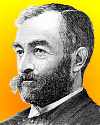 On 6 May 1896, inventor Samuel Pierpoint Langley launched Aerodrome No.5, using a a spring-actuated catapult mounted on top of a houseboat on the Potomac River, near Quantico, Virginia. It made the first successful flight of an unpiloted, engine-driven, heavier-than-air craft of substantial size. On 6 May 1896, inventor Samuel Pierpoint Langley launched Aerodrome No.5, using a a spring-actuated catapult mounted on top of a houseboat on the Potomac River, near Quantico, Virginia. It made the first successful flight of an unpiloted, engine-driven, heavier-than-air craft of substantial size.Yet Langley's career had been primarily as a physicist, astronomer, and was the third Secretary of the Smithsonian Institution. He also researched the relationship of solar phenomena to meteorology. It was only later in his life that had taken an active interest in aeronautics. An article published in the Chautauquan (1906) provides an interesting biographical sketch of Samuel Pierpoint Langley over the span of his diverse and productive career. |
| Book of the Day | |
| |
| Quotations for Today | |
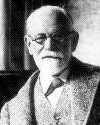 | "No, our science is no illusion. But an illusion it would be to suppose that what science cannot give us we can get elsewhere." |
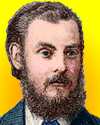 | "Hypotheses like professors, when they are seen not to work any longer in the laboratory, should disappear." |
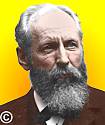 | "The conflict of theories, leading, as it eventually must, to the survival of the fittest, is advantageous." |
| QUIZ | |
| Before you look at today's web page, see if you can answer some of these questions about the events that happened on this day. Some of the names are very familiar. Others will likely stump you. Tickle your curiosity with these questions, then check your answers on today's web page. | |
| Births | |
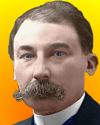 |  If you've taken organic chemistry, you'll have heard of this French chemist born 6 May 1871 who received a share of a Nobel Prize in 1912 for his development of the reaction known by his name. He prepared reagents by reacting magnesium with an organic halide in dry ether of the type RMgX which are versatile for use in the synthesis of a large number of different classes of compounds in organic chemistry. If you've taken organic chemistry, you'll have heard of this French chemist born 6 May 1871 who received a share of a Nobel Prize in 1912 for his development of the reaction known by his name. He prepared reagents by reacting magnesium with an organic halide in dry ether of the type RMgX which are versatile for use in the synthesis of a large number of different classes of compounds in organic chemistry. Can you name him? Can you name him? |
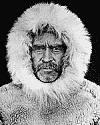 |  Together with his black assistant Matthew Henson and four Inuit companions, this American explorer, born 6 May 1856, reached a point on the earth never attained before on 6 Apr 1909 - the North Pole. He also had discovered on an earlier expedition in northern Greenland discovered the largest meteorite. Together with his black assistant Matthew Henson and four Inuit companions, this American explorer, born 6 May 1856, reached a point on the earth never attained before on 6 Apr 1909 - the North Pole. He also had discovered on an earlier expedition in northern Greenland discovered the largest meteorite. Can you name him? Can you name him? |
| Deaths | |
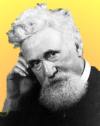 |  Hudson Maxim (1853-1927) died after a career inventing varieties of a product important to the U.S. army. In his early career, he had a printing business and he invented a method of colour printing in newspapers (1883). But later he had turned to inventing something totally different which was adopted by the U.S. Army in 1901. Hudson Maxim (1853-1927) died after a career inventing varieties of a product important to the U.S. army. In his early career, he had a printing business and he invented a method of colour printing in newspapers (1883). But later he had turned to inventing something totally different which was adopted by the U.S. Army in 1901.  What was the invention used by the military? What was the invention used by the military? |
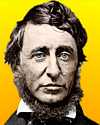 |  This famous American author and naturalist (1817-62) was known as the "Hermit of Walden". He observed the natural history where he lived, keeping thorough journals. Many regard him as the father of the environmental movement. This famous American author and naturalist (1817-62) was known as the "Hermit of Walden". He observed the natural history where he lived, keeping thorough journals. Many regard him as the father of the environmental movement. Can you name him? Can you name him? |
| Events | |
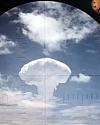 |  In 1962, a nuclear ballistic missile with a live nuclear warhead was test-fired. It was aimed across the Pacific Ocean toward Christmas Island on a 12.5 minute, 1,200-mile flight which ended when the warhead exploded in the air at an altitude of over 10,000-ft. Was it fired from a U.S. state, an island base, a ship, a submarine, an aircraft or another platform? In 1962, a nuclear ballistic missile with a live nuclear warhead was test-fired. It was aimed across the Pacific Ocean toward Christmas Island on a 12.5 minute, 1,200-mile flight which ended when the warhead exploded in the air at an altitude of over 10,000-ft. Was it fired from a U.S. state, an island base, a ship, a submarine, an aircraft or another platform? Can you name the launch platform? Can you name the launch platform? |
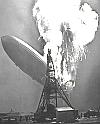 |  In 1937, the crash of The Hindenburg disaster killed 36 people. The zeppelin carrying 61 crew and 36 passengers burst into flame while landing an American the naval air station. Onlookers were horrified, as the 7 million cubic feet of hydrogen which supported the dirigible exploded in a fireball that destroyed the ship in about a half a minute. In 1937, the crash of The Hindenburg disaster killed 36 people. The zeppelin carrying 61 crew and 36 passengers burst into flame while landing an American the naval air station. Onlookers were horrified, as the 7 million cubic feet of hydrogen which supported the dirigible exploded in a fireball that destroyed the ship in about a half a minute. In which U.S. state did the crash occur? In which U.S. state did the crash occur? |
 In 1851, a U.S. patent was issued to John Gorrie for his invention of the first mechanical device of its kind, a forerunner of something now found in any modern house. In 1851, a U.S. patent was issued to John Gorrie for his invention of the first mechanical device of its kind, a forerunner of something now found in any modern house. Can you name his invention? Can you name his invention? | |
| Answers |
When you have your answers ready to all the questions above, you'll find all the information to check them, and more, on the May 6 web page of Today in Science History. Or, try this link first for just the brief answers. Fast answers for the previous newsletter for May 5: Arthur L. Schawlow; mercury-vapour lamp; Tom Blake; plutonium; Alan Bartlett Shepherd, Jr.; teaching Darwin's theory of evolution; it was the first U.S. patent issued to a woman. |
| Feedback |
 If you enjoy this newsletter, the website, or wish to offer encouragement or ideas, please send feedback by using your mail reader Reply button. If you enjoy this newsletter, the website, or wish to offer encouragement or ideas, please send feedback by using your mail reader Reply button. |
--
If you do not want to receive any more newsletters, Unsubscribe
To update your preferences and to unsubscribe visit this link



Δεν υπάρχουν σχόλια:
Δημοσίευση σχολίου